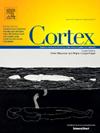探讨色盲患者的触色关联:个案研究。
IF 3.3
2区 心理学
Q1 BEHAVIORAL SCIENCES
引用次数: 0
摘要
跨模态对应-不同模态刺激属性之间的系统映射-在一般人群中普遍存在。例如,高音(相对于低音)通常与空间中较高的位置(相对于较低的位置)联系在一起,圆形(相对于有角的)形状往往与“Bouba”(相对于“Kiki”)联系在一起。关于直接感觉经验和概念色彩理解在跨模式对应中的作用仍然存在一些争论。在有触摸-颜色联觉的个体中——一种在触觉刺激中有意识地体验颜色的罕见情况——联想似乎是由感觉过程驱动的。然而,非联觉者的触摸-颜色联想是否也依赖于感觉过程尚不清楚。在这里,我们测试了一个假设,即完整的感觉(颜色)过程是触觉和颜色之间跨模态对应的可选条件,但不是必要条件。我们通过比较消色差观察者(m.s.)与匹配对照者的纹理-颜色关联来检验这一假设。在一项强制选择任务中,ms (N = 1)报告说,当反应选项是颜色术语(单词)时,纹理和颜色之间的关联与具有典型色觉的对照参与者(N = 17)非常相似,但当反应选项是色块(色调)时则不同。我们的研究结果表明,典型的(非联觉)触摸颜色联想可以在没有感官颜色知觉的情况下发生,这表明对颜色的概念性理解可能足以实现触摸颜色联想。本文章由计算机程序翻译,如有差异,请以英文原文为准。
Exploring touch-colour associations in achromatopsia: A case study
Crossmodal correspondences – systematic mappings between stimulus attributes in different modalities – are ubiquitous in the general population. For example, high-pitched (vs low-pitched) sounds are commonly associated with elevated (vs low) positions in space, and rounded (vs angular) shapes tend to be linked to the term ‘Bouba’ (vs ‘Kiki’). There is still some debate about the role of immediate sensory experience versus conceptual colour understanding in crossmodal correspondences. In individuals with touch-colour synaesthesia – a rare condition in which colours are consciously experienced during haptic stimulation – associations are plausibly driven by sensory processes. However it is not known if touch-colour associations in non-synaesthetes also rely on sensory processes. Here, we tested the hypothesis that intact sensory (colour) processes are an optional, but not necessary, condition for crossmodal correspondences between touch and colour. We tested this hypothesis by comparing texture-colour associations in an achromatopsic observer, M.S., to those of matched controls. In a forced-choice task, M.S. (N = 1) reported associations between texture and colour that were very similar to control participants with typical colour vision (N = 17) when the response options were colour terms (words), but not when the response options were colour patches (hues). Our results indicate that typical (non-synaesthete) touch-colour associations can occur without sensory colour perception, suggesting that conceptual understanding of colour may be sufficient for touch–colour associations.
求助全文
通过发布文献求助,成功后即可免费获取论文全文。
去求助
来源期刊

Cortex
医学-行为科学
CiteScore
7.00
自引率
5.60%
发文量
250
审稿时长
74 days
期刊介绍:
CORTEX is an international journal devoted to the study of cognition and of the relationship between the nervous system and mental processes, particularly as these are reflected in the behaviour of patients with acquired brain lesions, normal volunteers, children with typical and atypical development, and in the activation of brain regions and systems as recorded by functional neuroimaging techniques. It was founded in 1964 by Ennio De Renzi.
 求助内容:
求助内容: 应助结果提醒方式:
应助结果提醒方式:


